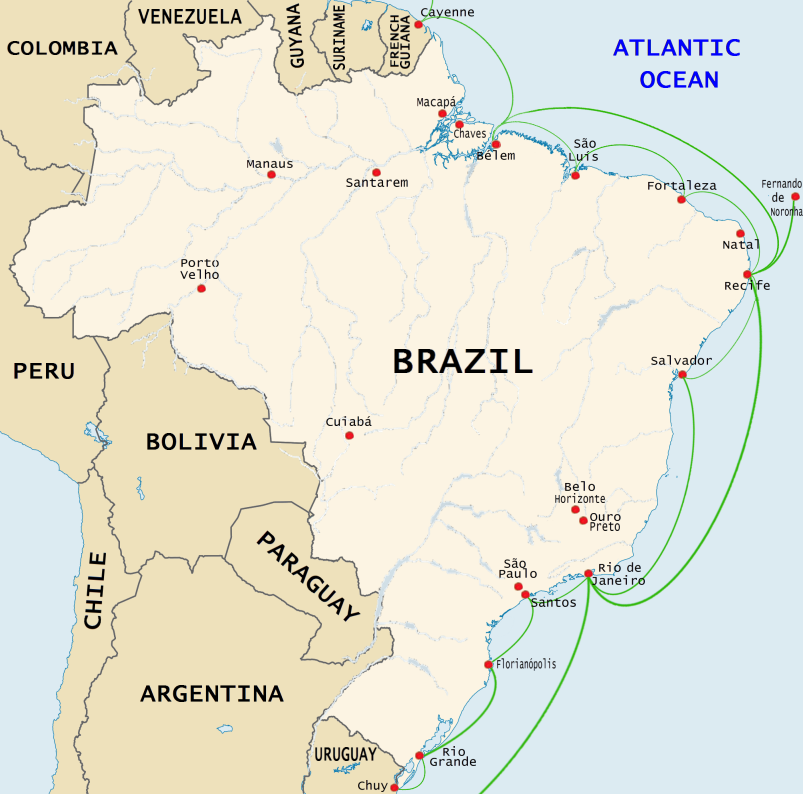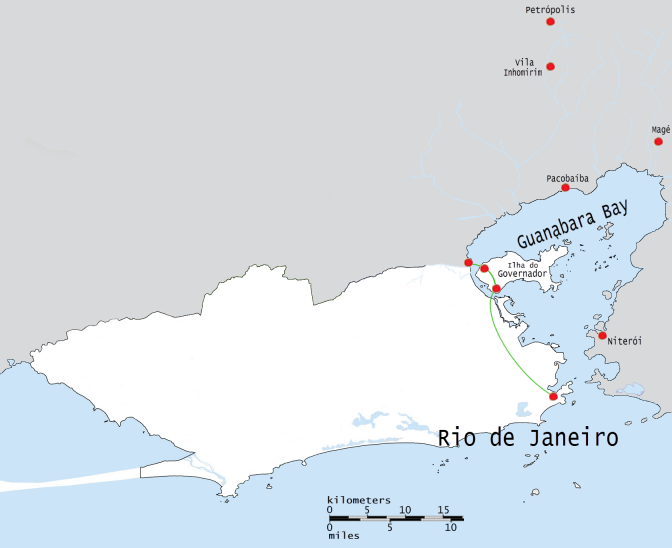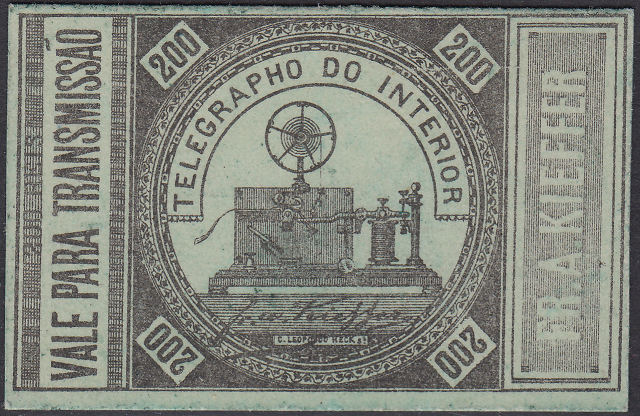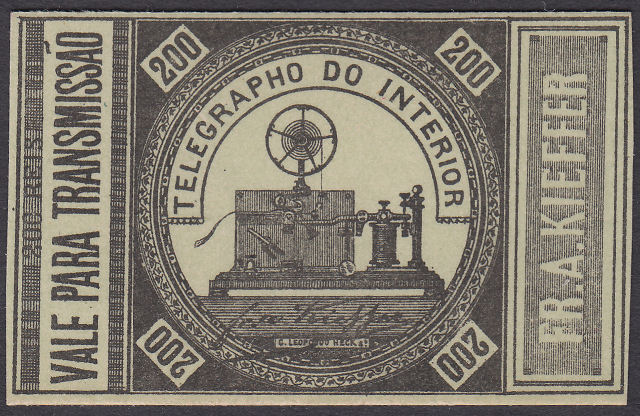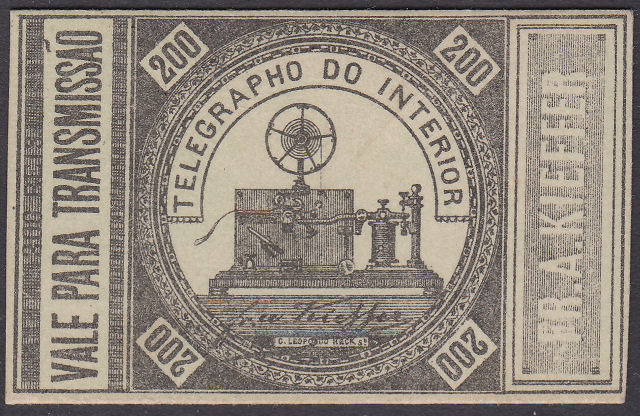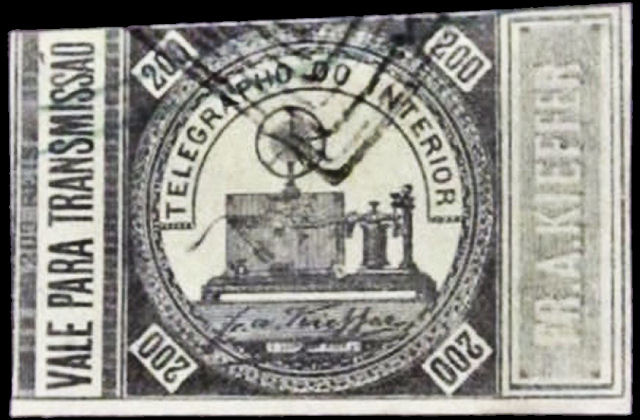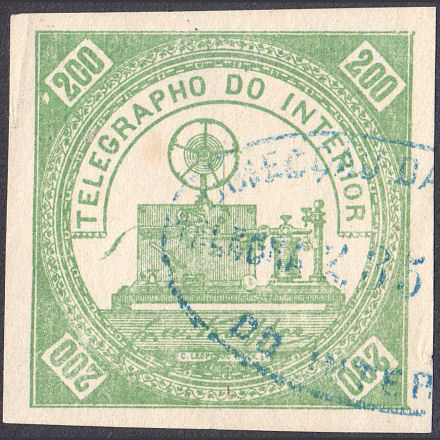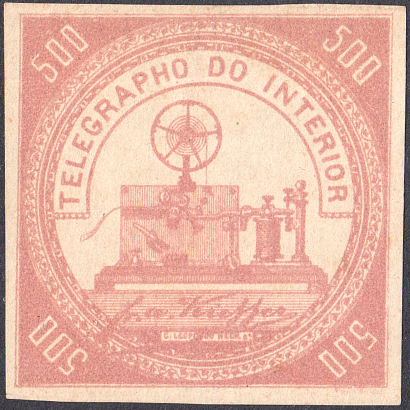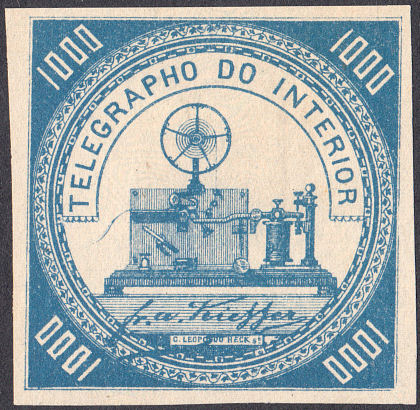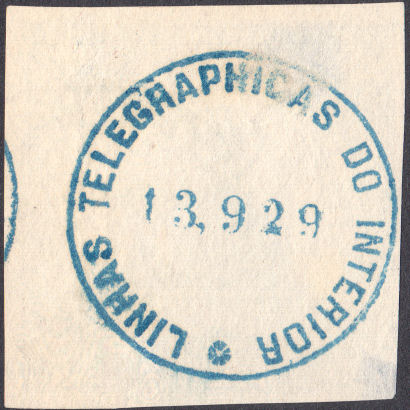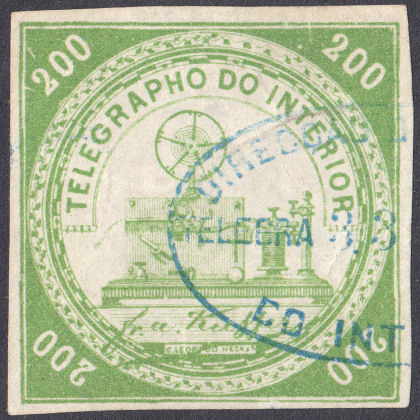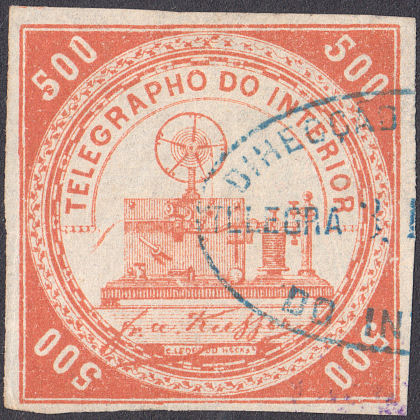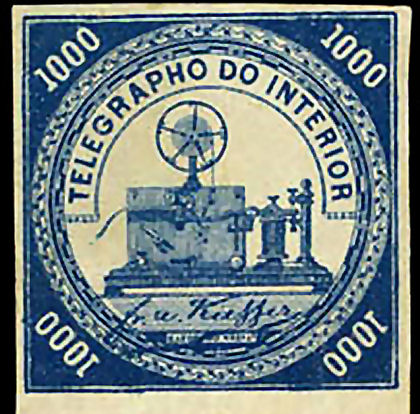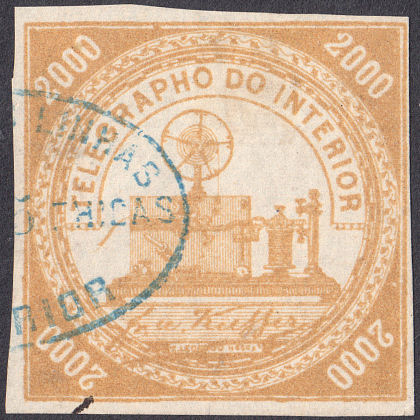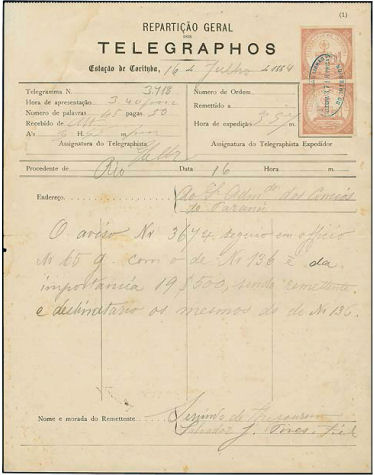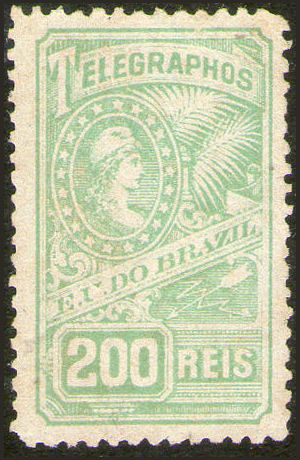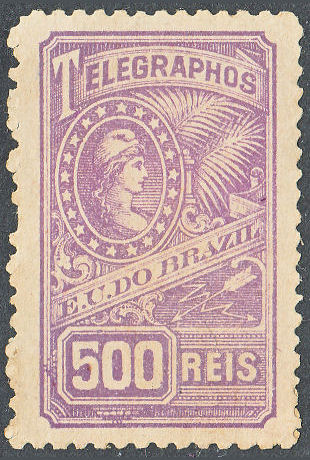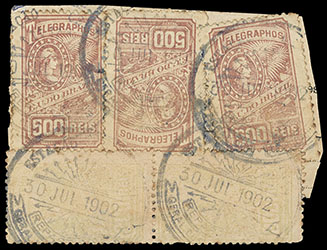According to Introdução da telegrafia elétrica no Brasil,
from 1809, optical telegraphs were used to warn of the approach of foreign vessels. These telegraphs
were located in Ponta Negra (Maricá), Cabo Frio, Itaipu (Niterói) - north of the city of Rio de Janeiro - in the hills of Babilônia (Copacabana) and the Castle, and in the
fortresses of Villegagnon.
Experiments were begun in 1851 with Electric telegraphy (ostensibly to combat the slave trade). These were successful enough to warrant the ordering of Morse telegraph apparatus and gutta-percha insulated cables from E. Stochrer in Leipzig. These were received March 15, 1852. On May 11, 1852, the first telegraph line was installed between Campo da Aclamação (now Campo de Santana) and Paço de São Cristóvão, in Rio de Janeiro. This was extended to include local military police and fire departments. It saw little use.
On January 17, 1854 a telegraphic centre was established to extend communications to Petrópolis (site of Emperor's summer palace) and Niterói, then beyond
the urban perimeter, it would follow the line by the way of Botafogo until the Lagoon, by the road of the Andaraí
to Tijuca, through Laranjeiras to Corcovado.
The first non-military telegraph line in Brazil was in January 1857 with the telegraph line, between Petrópolis and the Health beach at Rio de Janeiro,
the total length was 50,630 meters, including 14,970 meters of submarine cable in the bay of Guanabara.
next to the Institute of the Blind Boys, a submarine cable stretched 7,050 meters until the Ponta of Matoso on Ilha do Governador. From there, an air line with a length of 6,160 meters
Pinion Bag. From this extreme, another submarine cable of 7,920 meters departed to the bridge of Mauá, where was attached to the airline of iron wire, that followed next to the line of the train until the Root of the Serra da Estrela and from there to Petrópolis (site of Emperor's summer palace), stretching further 29,500 meters. From Praia da Saúde to Petrópolis, the total length was 50,630 meters, being 14,970 meters of submarine cable in the bay of Guanabara.
Despite the intention to extend the telegraph to Cabo Frio, Bahia, Pernambuco, Maranhão and Rio Grande do Sul, at the end of 1858, the telegraphs in Brazil was still restricted only to the capital and surroundings and almost exclusively to the services of the Court. On August 1, 1858, the free transmission of correspondence by the electric telegraph between the Prainha and Petropolis Stations, which was in front of the Hotel de Bragança, was franked. Two postal workers were hired for delivery of telegrams, one in Petrópolis and another in Prainha, in the Court. 8 months later, 1829 telegrams had been sent, still free of charge.
In 1861 it was decided that the General Bureau of Telegraphs should build its own land lines, moving progressively northwards, taking the line to São João da Barra and, year after year, progressing with the extension of the line according to approved credit.
Decree No. 3.288, of July 20, 1864 merged the optical and electrical telegraphs. Optical stations were fitted with electric telegraphs. Employees unable to use the electric telegraphs were dismissed and a workshop for repair of telegraph equipment was established in April 1865 at No.39 Campo da Aclamação. Due to the inability to decide between public and private development of the telegraphs and whether to involve foreign companies, the network spread slowly. Then came the Paraguayan war (1864-70). This both rapidly expanded the network in the south and delayed plans for the north. From September 1865 to June 1866 the south was connected to the front. Siemens provided cable for 17 submarine sections that degraded rapidly and Siemens had to replace them (some twice).
The South line followed the following route:
from the capital it connects to Itaguaí, Mangaratiba, Angra dos Reis, Parati,
in Rio de Janeiro; Ubatuba, São Sebastião, Santos and Iguape,
in São Paulo; Paranaguá,
Paraná; São Francisco do Sul, Itajaí, Desterro (Florianópolis) and Laguna,
in Santa Catarina; Torres, Conceição do Arroio and Porto Alegre,
in the province of São Pedro do Rio Grande do Sul.
(17 stations)
The terrestrial telegraph networks were constructed by the General Office of the Telegraphs, a government company under the direction of Guilherme S. de Capanema. However, the concession given to Kieffer in 1869 (Decreto n. 4350, de 5 de abril de 1869 Brazil) to extend a land line between the Court and Ouro Preto indicates an attempt by the Brazilian government to experiment with the use of foreign companies in the development of telegraphy. Although the telegraph line constructed by Kieffer operated with success, no further concessions were made to terrestrial telegraph lines during the Empire, except the lines that served the railways. The classes initially given by Capanema and his assistants marked the beginning of the study of telegraphy in Brazil. Although in a precarious way, limited to practical interests and attracting a group of workers with low school education, the telegraphy developed and aroused interest. Subsequent to the period analyzed in this article, the study of telegraphy became part of the curriculum of some secondary schools, demonstrating the importance given to the subject.
At the top of the map, Cayenne connects to Paramaribo in Suriname. These two were connected in 1891, with Cayenne connected on to Port au Prince(Haiti), Fort-de-France(Martinique), Puerto Plata, (Dominican Rep.) and Guadeloupe (The Saints Island).
In 1892 LA COMPAGNIE DES CÂBLES SUD-AMÉRICAINS laid a 1620 nm long cable from Dakar, Senegal to the island of Fernando de Noronha, Brazil and then a 347 nm long cable to Pernambuco. The system was extended in 1910-11 when Norddeutsche Seekabelwerke laid cables, Conakry, French Guinea - Monrovia, Liberia 309 nm and Monrovia - Grand Bassam, Ivory Coast 500 nm.
In 1924 CS. Faraday (2) laid cable from Cape St Vincent(Portugal) to Fernando Noronha, and from there on to Rio de Janeiro for Italcable. This was rerouted to Reciffe in 1951.
The cable at the bottom goes from Rio de Janeiro to Montevideo and Buenos Aires.
A list of 1906 for wireless-Telegraph stations lists 3 Telefunken Station with a range of 200km at Ilha Grande (near Rio de Janeiro), Fort Santa Cruz (near Rio de Janeiro) and Ilha de Cobras, Guanabara Bay a little west of Rio de Janeiro.
There were also 3 Shoemaker 10 KW sets at Para (Belem area), Santarem and Manaos.
This is here to get consistent results on different browsers. |
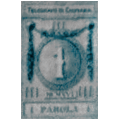
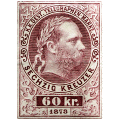
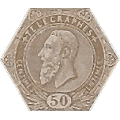
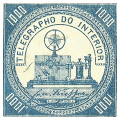
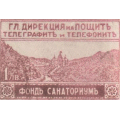
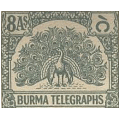
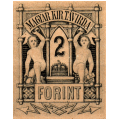

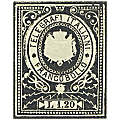
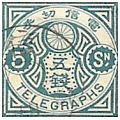
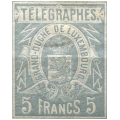
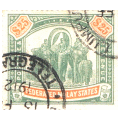
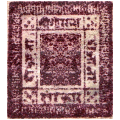
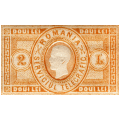
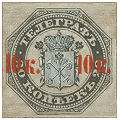
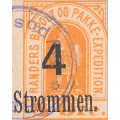
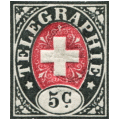
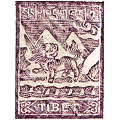
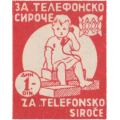
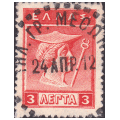
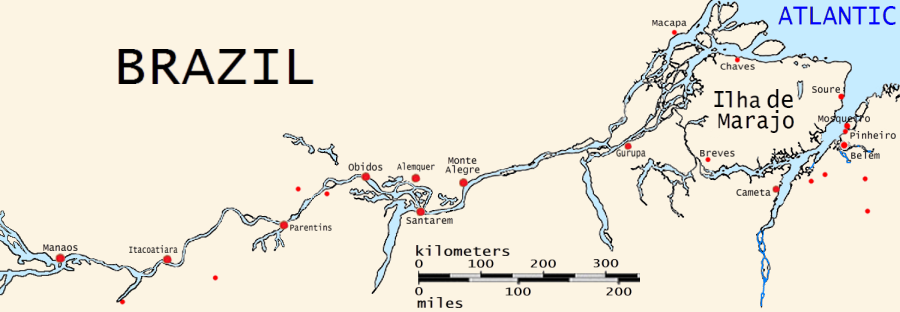 A detailed map of Para can be found on
A detailed map of Para can be found on 